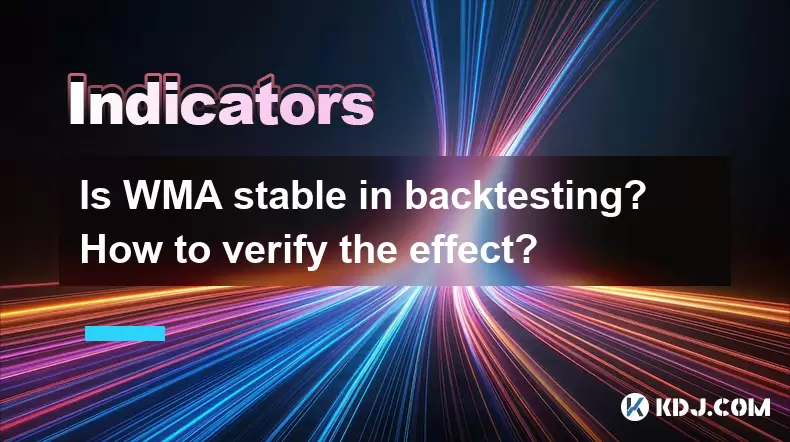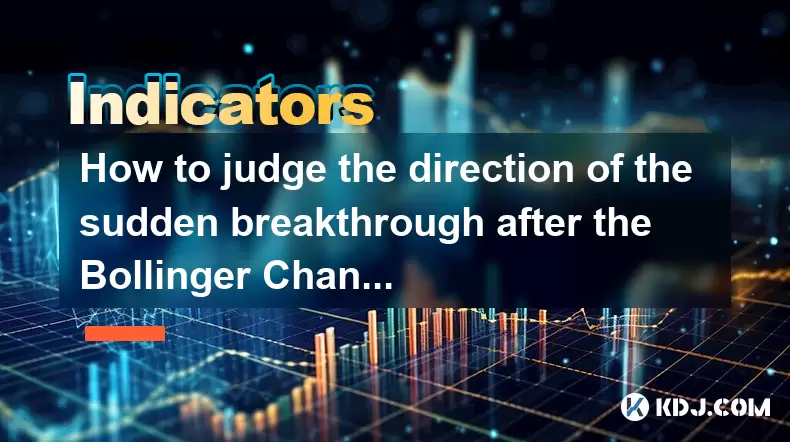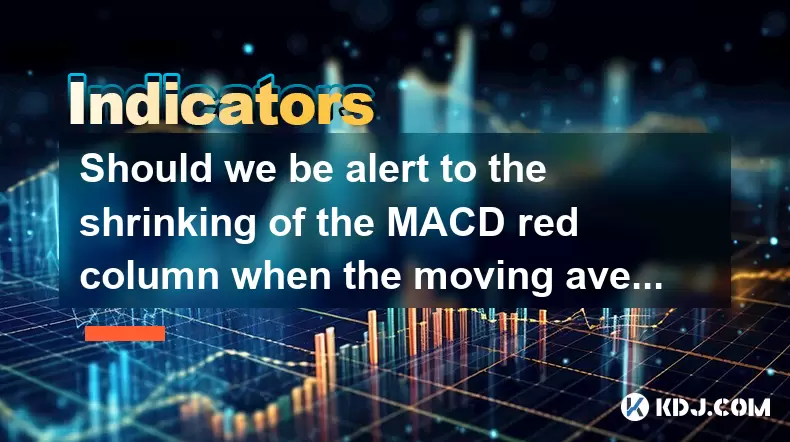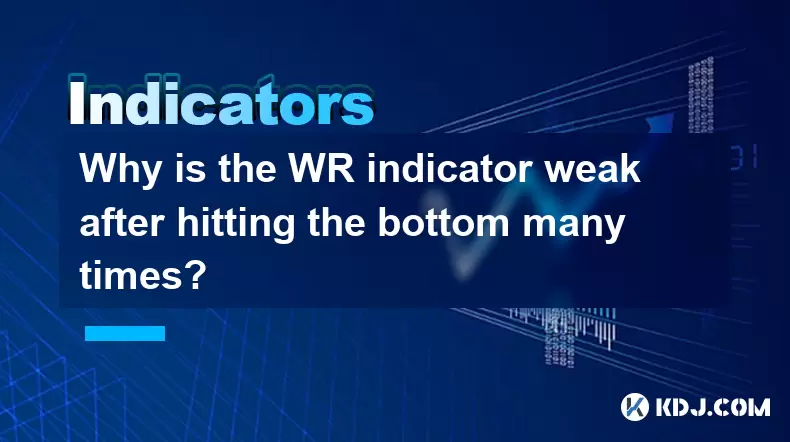-
 Bitcoin
Bitcoin $101,898.5005
-0.75% -
 Ethereum
Ethereum $2,258.1125
-1.07% -
 Tether USDt
Tether USDt $1.0004
0.01% -
 XRP
XRP $2.0178
-2.93% -
 BNB
BNB $624.0243
-1.53% -
 Solana
Solana $134.3298
-0.90% -
 USDC
USDC $0.9999
0.01% -
 TRON
TRON $0.2675
-2.05% -
 Dogecoin
Dogecoin $0.1538
-1.96% -
 Cardano
Cardano $0.5482
-1.11% -
 Hyperliquid
Hyperliquid $35.5636
5.45% -
 Bitcoin Cash
Bitcoin Cash $453.4902
-1.66% -
 Sui
Sui $2.5134
-2.97% -
 UNUS SED LEO
UNUS SED LEO $9.1292
1.77% -
 Chainlink
Chainlink $11.8457
-1.60% -
 Stellar
Stellar $0.2312
-2.73% -
 Avalanche
Avalanche $16.9721
0.29% -
 Toncoin
Toncoin $2.7549
-3.82% -
 Shiba Inu
Shiba Inu $0.0...01081
-1.10% -
 Litecoin
Litecoin $80.8250
-0.71% -
 Hedera
Hedera $0.1374
0.21% -
 Monero
Monero $305.4827
-2.36% -
 Ethena USDe
Ethena USDe $1.0006
0.00% -
 Dai
Dai $1.0000
-0.01% -
 Polkadot
Polkadot $3.2085
-3.12% -
 Bitget Token
Bitget Token $4.0845
-3.13% -
 Uniswap
Uniswap $6.3353
-1.63% -
 Pi
Pi $0.5085
-0.70% -
 Pepe
Pepe $0.0...08913
-3.82% -
 Aave
Aave $232.7090
-0.58%
Is WMA stable in backtesting? How to verify the effect?
WMA's stability in backtesting can be verified by choosing a reliable platform, using quality data, setting clear rules, and comparing results with other indicators.
May 23, 2025 at 04:29 am

Is WMA (Weighted Moving Average) stable in backtesting? How to verify the effect?
When it comes to trading strategies in the cryptocurrency market, the stability and effectiveness of technical indicators like the Weighted Moving Average (WMA) are crucial for traders. WMA is a type of moving average that assigns more weight to recent prices, making it more responsive to new information than a simple moving average. In this article, we will delve into the stability of WMA in backtesting and explore how to verify its effect on cryptocurrency trading strategies.
Understanding WMA and Its Application in Cryptocurrency Trading
WMA, or Weighted Moving Average, is a technical indicator that traders use to smooth out price data and identify trends over time. Unlike the Simple Moving Average (SMA), which assigns equal weight to all prices within the period, WMA gives more importance to recent prices. This characteristic makes WMA more sensitive to recent price movements, which can be particularly useful in the volatile cryptocurrency markets.
In cryptocurrency trading, WMA can be used in various ways, such as identifying potential entry and exit points, confirming trend directions, and filtering out noise in price data. Traders often combine WMA with other indicators to create more robust trading strategies. However, the effectiveness and stability of WMA in different market conditions, especially in backtesting, need thorough examination.
The Importance of Backtesting in Evaluating WMA Stability
Backtesting is a critical process for any trading strategy, including those that use WMA. It involves running a trading strategy against historical data to see how it would have performed in the past. Backtesting helps traders assess the stability and reliability of WMA by simulating how the indicator would have reacted to past market conditions.
The stability of WMA in backtesting refers to how consistently the indicator performs across different time periods and market conditions. A stable WMA should produce similar results when backtested over various segments of historical data, indicating that it can be relied upon for future trading decisions. However, the cryptocurrency market's volatility can pose challenges to the stability of any technical indicator, including WMA.
Steps to Verify the Effect of WMA in Backtesting
To verify the effect of WMA in backtesting, traders need to follow a systematic approach. Here are the detailed steps to conduct a thorough backtest and evaluate the stability of WMA:
Choose a Reliable Backtesting Platform: Start by selecting a reputable backtesting platform that supports cryptocurrency data. Platforms like TradingView, MetaTrader, and specialized crypto trading software can be used for this purpose.
Select Historical Data: Obtain high-quality historical data for the cryptocurrency you want to analyze. Ensure that the data is clean and covers a sufficiently long period to capture various market conditions.
Set Up the WMA Indicator: Configure the WMA indicator in your backtesting platform. Decide on the period length for the WMA, which can vary based on your trading strategy. For example, a shorter period might be used for short-term trading, while a longer period might be suitable for long-term trends.
Define Trading Rules: Establish clear trading rules based on WMA signals. For instance, you might decide to buy when the price crosses above the WMA and sell when it crosses below. These rules should be consistent with your overall trading strategy.
Run the Backtest: Execute the backtest using the chosen platform and historical data. Monitor how the WMA performs in different market scenarios, including bull markets, bear markets, and periods of high volatility.
Analyze Results: After the backtest is complete, analyze the results to assess the performance of WMA. Look at metrics such as win rate, profit factor, maximum drawdown, and the consistency of results across different time frames.
Compare with Other Indicators: To further verify the effect of WMA, compare its performance with other moving averages like SMA or Exponential Moving Average (EMA). This comparison can help you understand the relative strengths and weaknesses of WMA.
Adjust and Retest: Based on the initial results, you may need to adjust the WMA period or trading rules. Retest the strategy with these modifications to see if performance improves.
Document Findings: Keep detailed records of your backtesting results, including any adjustments made and their impact on performance. This documentation will be valuable for future strategy development and refinement.
Factors Affecting WMA Stability in Backtesting
Several factors can influence the stability of WMA in backtesting, and understanding these can help traders make more informed decisions. Some key factors include:
Market Volatility: The high volatility of cryptocurrency markets can affect the stability of WMA. During periods of extreme price swings, WMA may generate more false signals, leading to inconsistent backtesting results.
Time Frame: The chosen time frame for WMA can significantly impact its stability. Shorter time frames may result in more responsive but less stable signals, while longer time frames may produce more stable but slower signals.
Trading Volume: Low trading volume can lead to less reliable WMA signals, as the indicator relies on price data that may not accurately reflect market sentiment during low liquidity periods.
Data Quality: The accuracy and completeness of historical data used in backtesting can affect the stability of WMA. Incomplete or erroneous data can lead to misleading results.
Practical Example of WMA Backtesting in Cryptocurrency Trading
To illustrate how to verify the effect of WMA in backtesting, let's consider a practical example using Bitcoin (BTC) data. Suppose we want to backtest a simple trading strategy using a 20-day WMA on daily BTC price data.
Choose a Backtesting Platform: We'll use TradingView for this example, as it offers robust backtesting capabilities and supports cryptocurrency data.
Select Historical Data: We'll use daily BTC price data from January 1, 2020, to December 31, 2022, to cover various market conditions.
Set Up the WMA Indicator: In TradingView, we'll add a 20-day WMA to the chart.
Define Trading Rules: Our trading rules will be:
- Buy when the price crosses above the 20-day WMA.
- Sell when the price crosses below the 20-day WMA.
Run the Backtest: We'll run the backtest using the Pine Script in TradingView, which allows us to automate the strategy based on our rules.
Analyze Results: After running the backtest, we'll examine the performance metrics. Let's assume the results show a win rate of 60%, a profit factor of 1.5, and a maximum drawdown of 25%.
Compare with Other Indicators: We'll also backtest the same strategy using a 20-day SMA and EMA to compare their performance with WMA.
Adjust and Retest: If the initial results are not satisfactory, we might adjust the WMA period to 10 days or 30 days and retest the strategy.
Document Findings: We'll record all the results, including the initial and adjusted backtests, for future reference.
Common Pitfalls to Avoid in WMA Backtesting
When verifying the effect of WMA in backtesting, traders should be aware of several common pitfalls that can skew results and lead to false conclusions:
Overfitting: Adjusting the strategy too closely to historical data can result in a strategy that performs well in backtesting but fails in live trading. It's important to keep the strategy simple and avoid overfitting.
Survivorship Bias: Using only data from cryptocurrencies that have survived can lead to overly optimistic results. Ensure that the historical data includes both successful and failed cryptocurrencies.
Look-Ahead Bias: Using future data in the backtest can inflate performance metrics. Always ensure that the backtest uses only past data available at the time of each trade.
Transaction Costs: Neglecting transaction costs can lead to unrealistic performance metrics. Always include realistic transaction costs in the backtest to get a true picture of strategy performance.
Frequently Asked Questions
Q: Can WMA be used effectively in highly volatile cryptocurrency markets?
A: WMA can be used in volatile markets, but its effectiveness depends on the chosen period and trading rules. Shorter WMA periods may generate more signals but can be less stable, while longer periods may be more stable but slower to react to price changes. Traders should backtest different WMA periods to find the optimal setting for their strategy.
Q: How does WMA compare to other moving averages in terms of stability?
A: WMA is generally more responsive to recent price changes than SMA but less so than EMA. In terms of stability, WMA may fall between SMA and EMA, depending on the period used. Backtesting different moving averages and comparing their performance can help traders determine which is most stable for their strategy.
Q: Is it necessary to combine WMA with other indicators for a stable trading strategy?
A: Combining WMA with other indicators can enhance the stability and reliability of a trading strategy. For example, using WMA alongside indicators like the Relative Strength Index (RSI) or Bollinger Bands can help filter out false signals and improve overall performance. However, the necessity of combining indicators depends on the specific trading strategy and market conditions.
Q: How can I ensure the backtesting results are reliable when using WMA?
A: To ensure reliable backtesting results with WMA, use high-quality historical data, avoid overfitting, include transaction costs, and test the strategy across different time periods and market conditions. Additionally, compare WMA's performance with other moving averages to validate its effectiveness.
Disclaimer:info@kdj.com
The information provided is not trading advice. kdj.com does not assume any responsibility for any investments made based on the information provided in this article. Cryptocurrencies are highly volatile and it is highly recommended that you invest with caution after thorough research!
If you believe that the content used on this website infringes your copyright, please contact us immediately (info@kdj.com) and we will delete it promptly.
- FUNToken: Decoding Past Trends and Getting Started in the Gaming Crypto Sphere
- 2025-06-23 22:25:12
- BTC Price Analysis: Navigating Volatility and the Quest for a New ATH
- 2025-06-23 22:25:12
- Genesis, Bitcoin Mining, and Air-Cooled Miners: A New Era?
- 2025-06-23 22:45:12
- Coinbase's Growth and Resilience: Navigating the Crypto Landscape
- 2025-06-23 22:45:12
- Bitcoin Options Market: Bullish Bets Amidst Geopolitical Jitters
- 2025-06-23 22:51:52
- Dubai's Virtual Asset Scene Heats Up: GAP 3 Partners Lands Landmark Investment Advisor License
- 2025-06-23 22:55:12
Related knowledge

What is the significance of the gap formed by the gap opening not being filled within five days?
Jun 23,2025 at 09:42pm
Understanding Gaps in Cryptocurrency TradingIn the world of cryptocurrency trading, a gap refers to a situation where the price of an asset jumps from one level to another without any trading activity occurring between those two levels. This often happens over weekends or holidays when the market is closed, and significant news or events occur that impa...

Does the second golden cross of MACD above the zero axis represent the continuation of strength?
Jun 23,2025 at 08:21pm
Understanding the MACD IndicatorThe Moving Average Convergence Divergence (MACD) is a widely used technical analysis tool in cryptocurrency trading. It consists of three main components: the MACD line, the signal line, and the histogram. The MACD line is calculated by subtracting the 26-period Exponential Moving Average (EMA) from the 12-period EMA. The...

How to judge the direction of the sudden breakthrough after the Bollinger Channel narrows to the extreme?
Jun 23,2025 at 11:00pm
Understanding the Bollinger Channel and Its Narrowing PatternThe Bollinger Channel is a widely used technical indicator in cryptocurrency trading, consisting of three bands: the middle band (a simple moving average), and two outer bands that represent standard deviations from the middle line. When the price consolidates for an extended period, the chann...

Is it effective when the DIF line suddenly crosses the zero axis when the volume is shrinking and the market is trading sideways?
Jun 23,2025 at 07:29pm
Understanding the DIF Line in Technical AnalysisThe DIF line, or the Difference Line, is a critical component of the MACD (Moving Average Convergence Divergence) indicator, widely used in technical analysis across cryptocurrency and traditional financial markets. It represents the difference between the 12-period EMA (Exponential Moving Average) and the...

Should we be alert to the shrinking of the MACD red column when the moving average is arranged in a bullish pattern?
Jun 23,2025 at 08:14pm
Understanding the MACD Red Column and Its SignificanceThe Moving Average Convergence Divergence (MACD) is a widely used technical indicator in cryptocurrency trading. It consists of three main components: the MACD line, the signal line, and the MACD histogram (the red column). The red column represents the difference between the MACD line and the signal...

Why is the WR indicator weak after hitting the bottom many times?
Jun 23,2025 at 07:56pm
Understanding the WR Indicator in Cryptocurrency TradingThe Williams %R (WR) indicator is a momentum oscillator used by traders to identify overbought and oversold levels in the market. It ranges from 0 to -100, with readings above -20 considered overbought and below -80 considered oversold. In the context of cryptocurrency trading, where volatility is ...

What is the significance of the gap formed by the gap opening not being filled within five days?
Jun 23,2025 at 09:42pm
Understanding Gaps in Cryptocurrency TradingIn the world of cryptocurrency trading, a gap refers to a situation where the price of an asset jumps from one level to another without any trading activity occurring between those two levels. This often happens over weekends or holidays when the market is closed, and significant news or events occur that impa...

Does the second golden cross of MACD above the zero axis represent the continuation of strength?
Jun 23,2025 at 08:21pm
Understanding the MACD IndicatorThe Moving Average Convergence Divergence (MACD) is a widely used technical analysis tool in cryptocurrency trading. It consists of three main components: the MACD line, the signal line, and the histogram. The MACD line is calculated by subtracting the 26-period Exponential Moving Average (EMA) from the 12-period EMA. The...

How to judge the direction of the sudden breakthrough after the Bollinger Channel narrows to the extreme?
Jun 23,2025 at 11:00pm
Understanding the Bollinger Channel and Its Narrowing PatternThe Bollinger Channel is a widely used technical indicator in cryptocurrency trading, consisting of three bands: the middle band (a simple moving average), and two outer bands that represent standard deviations from the middle line. When the price consolidates for an extended period, the chann...

Is it effective when the DIF line suddenly crosses the zero axis when the volume is shrinking and the market is trading sideways?
Jun 23,2025 at 07:29pm
Understanding the DIF Line in Technical AnalysisThe DIF line, or the Difference Line, is a critical component of the MACD (Moving Average Convergence Divergence) indicator, widely used in technical analysis across cryptocurrency and traditional financial markets. It represents the difference between the 12-period EMA (Exponential Moving Average) and the...

Should we be alert to the shrinking of the MACD red column when the moving average is arranged in a bullish pattern?
Jun 23,2025 at 08:14pm
Understanding the MACD Red Column and Its SignificanceThe Moving Average Convergence Divergence (MACD) is a widely used technical indicator in cryptocurrency trading. It consists of three main components: the MACD line, the signal line, and the MACD histogram (the red column). The red column represents the difference between the MACD line and the signal...

Why is the WR indicator weak after hitting the bottom many times?
Jun 23,2025 at 07:56pm
Understanding the WR Indicator in Cryptocurrency TradingThe Williams %R (WR) indicator is a momentum oscillator used by traders to identify overbought and oversold levels in the market. It ranges from 0 to -100, with readings above -20 considered overbought and below -80 considered oversold. In the context of cryptocurrency trading, where volatility is ...
See all articles
























































































